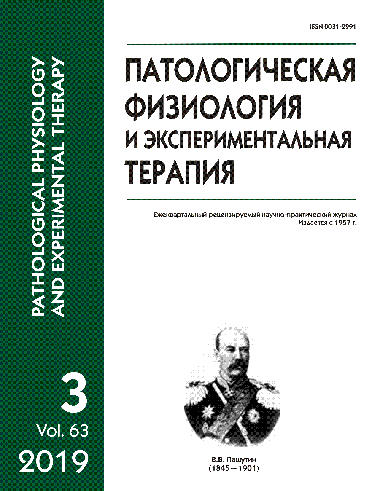Pathophysiological mechanisms of hepatic immune reactivity in prolonged experimental exposure of the body to sodium fluoride
Abstract
Studying mechanisms, which maintain the body homeostasis, is particularly important in the conditions of continuous impact of adverse environmental and manufacturing factors. Long-term exposure to fluorides leads to chronic fluoric intoxication, the pathogenesis of which is a subject of multiple controversy and discussions. Not enough attention is still paid to elucidating the visceral pathology associated with fluorine-induced immune disorders. There are virtually no studies of immune reactions that define the morphofunctional nature of the liver response to early stages of fluoric intoxication. Aim. To study pathophysiological mechanisms of hepatic immune reactivity in subchronic exposure of the body to fluorine compounds. Methods. Experiments were performed on 210 male rats weighing 180-220 g. The animals were divided into two groups: 1) control (n=80) and 2) subchronic exposure to sodium fluoride (n=130). The rats had free access to a 10 mg/l aqueous solution of sodium fluoride (daily dose, 1.2 mg/kg body weight) for 12 weeks. Blood was withdrawn from the caudal vein at 1, 3, 6, 9, and 12 weeks of the experiment for immunological and biochemical tests. Histological study of the liver was performed after decapitation of rats under ether anesthesia. Results. The subchronic exposure to sodium fluoride was associated with intracellular and intravascular damage of the liver. Activation of inflammatory mediators and development of immunological disorders during the experiment contributed to a systemic inflammatory reaction, which resulted in persistent morphological injuries of the liver and changes in enzyme activities in major metabolic pathways. Conclusion. The study results can be used for development and implementation of preventive measures against the effects of high fluorine concentrations, which would include a successive use of detoxification, immunomodulation and organ protection.






